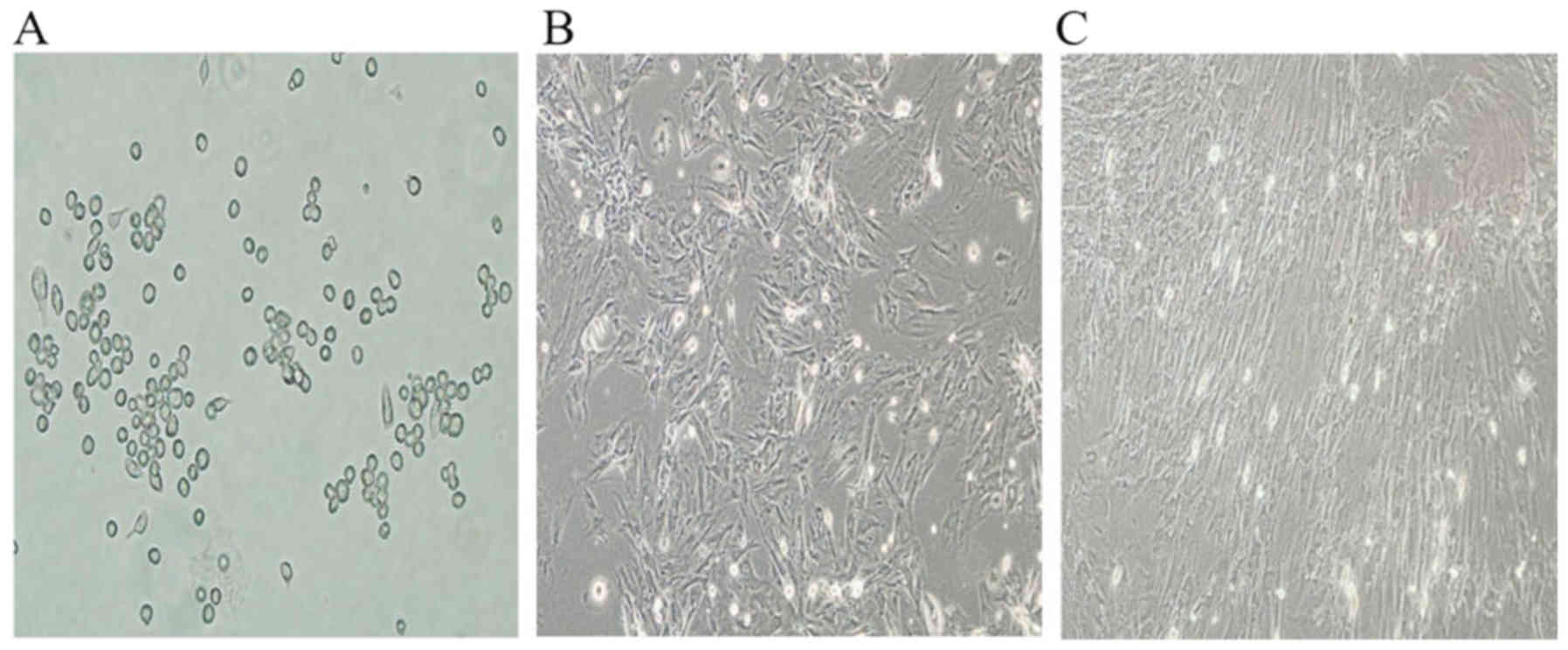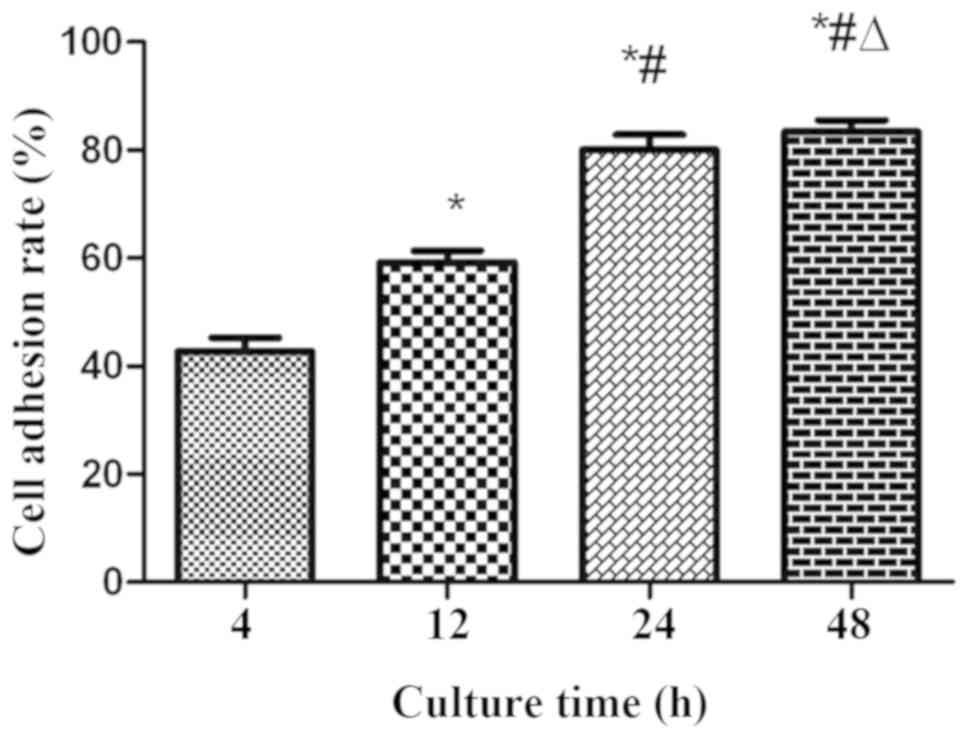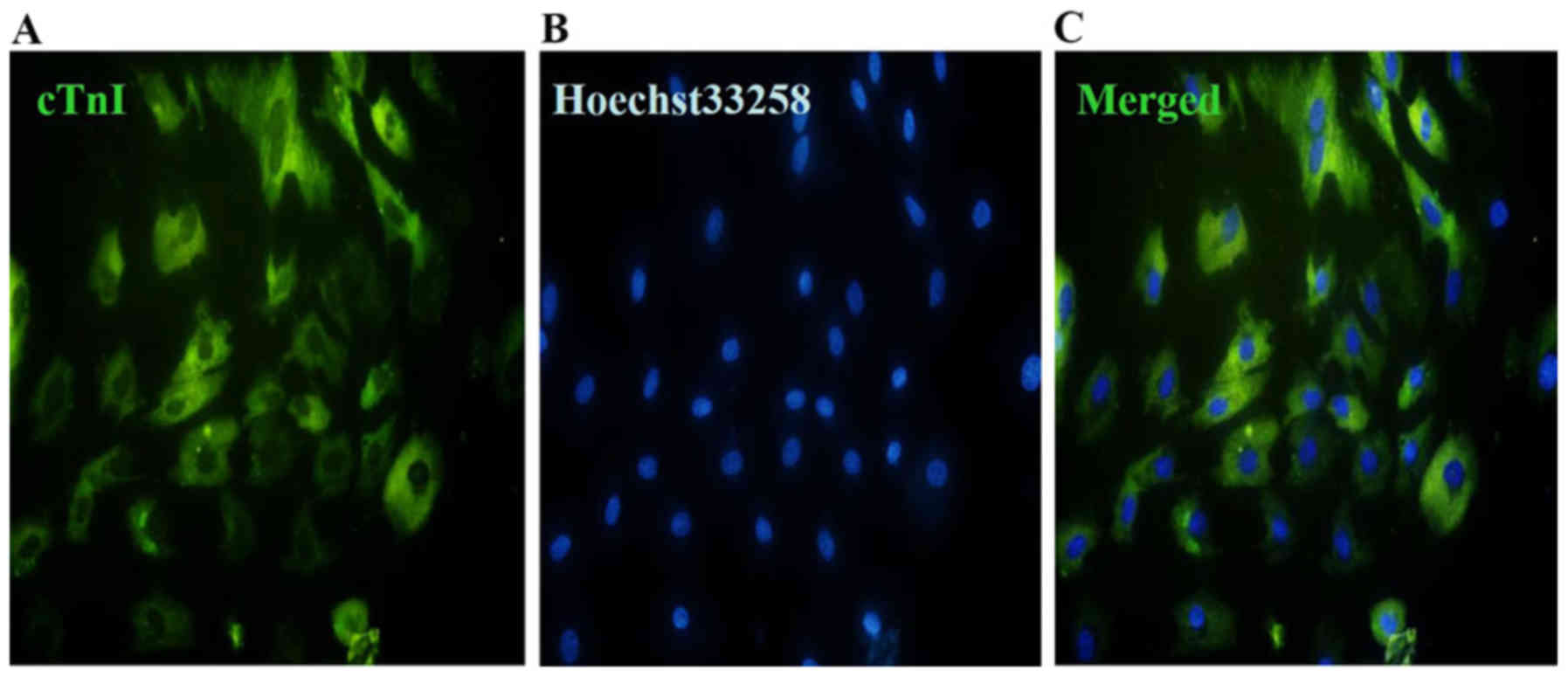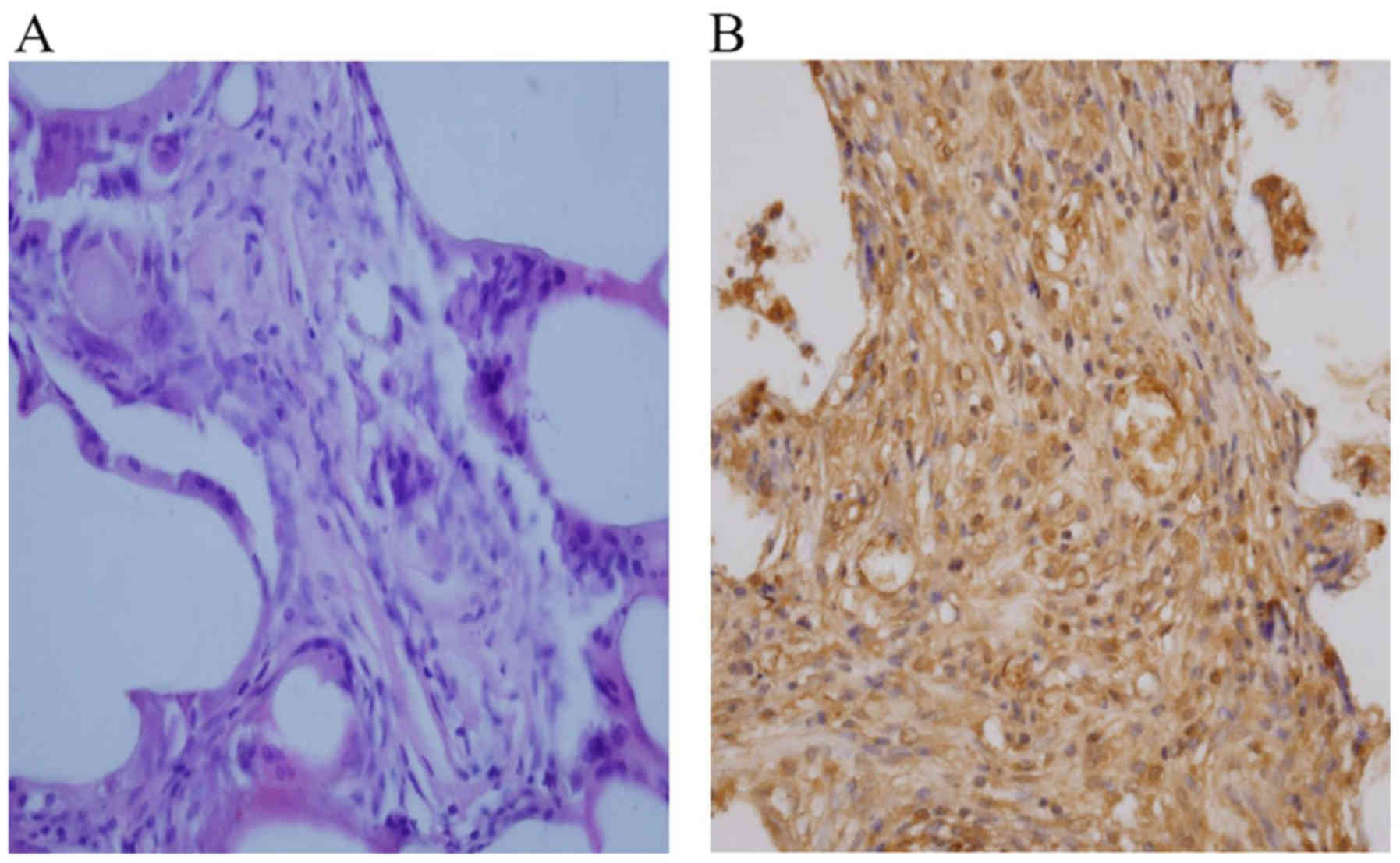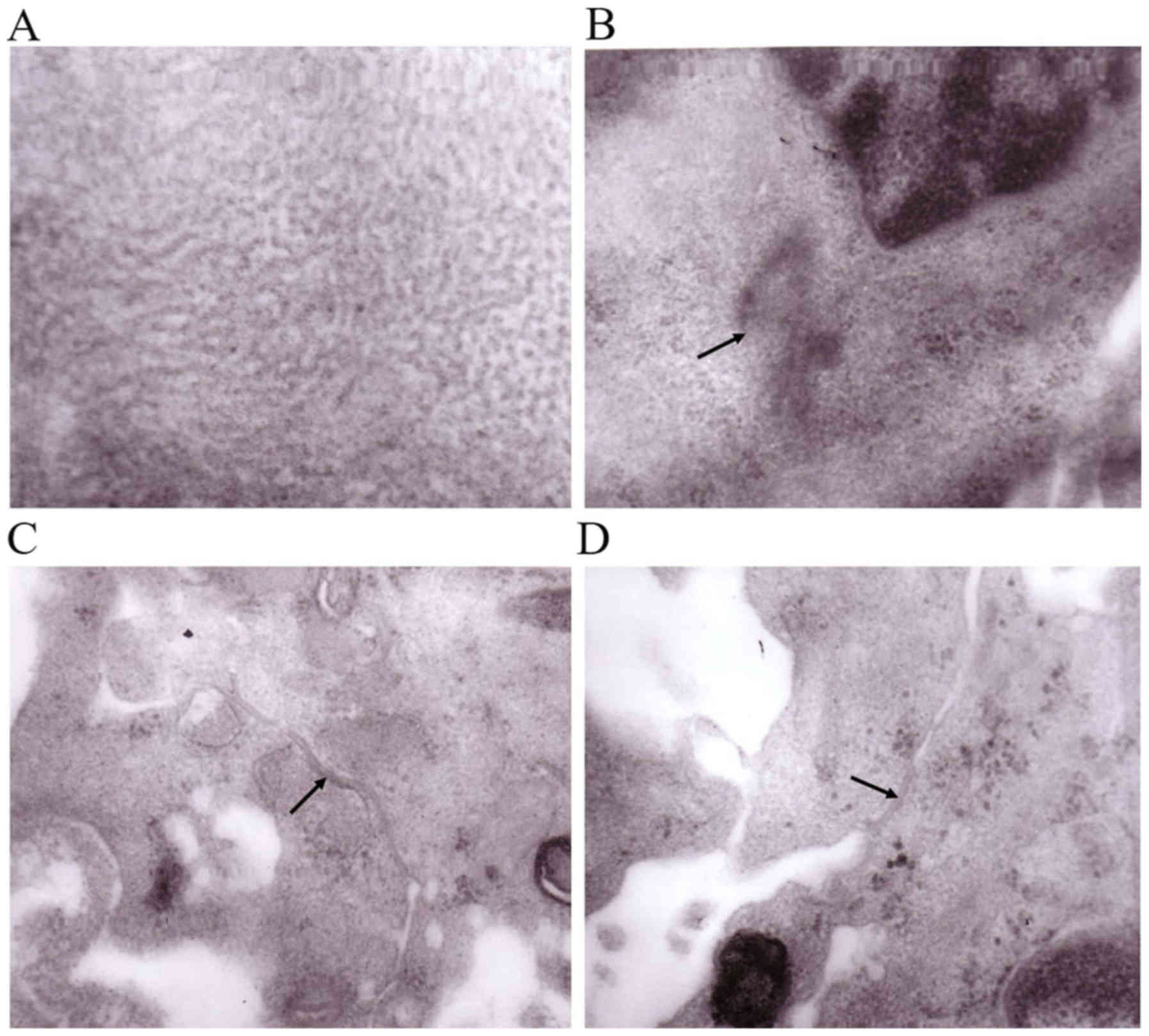|
1
|
Lozano R, Naghavi M, Foreman K, Lim S,
Shibuya K, Aboyans V, Abraham J, Adair T, Aggarwal R, Ahn SY, et
al: Global and regional mortality from 235 causes of death for 20
age groups in 1990 and 2010: A systematic analysis for the Global
burden of disease study 2010. Lancet. 380:2095–2128. 2012.
View Article : Google Scholar : PubMed/NCBI
|
|
2
|
Laflamme MA and Murry CE: Heart
regeneration. Nature. 473:326–335. 2011. View Article : Google Scholar : PubMed/NCBI
|
|
3
|
Jara Avaca M and Gruh I: Bioengineered
cardiac tissue based on human stem cells for clinical application.
Adv Biochem Eng Biotechnol. 163:117–146. 2018.PubMed/NCBI
|
|
4
|
Wendel JS, Ye L, Tao R, Zhang J, Zhang J,
Kamp TJ and Tranquillo RT: Functional effects of a
tissue-engineered cardiac patch from human induced pluripotent stem
cell-derived cardiomyocytes in a rat infarct model. Stem Cells
Transl Med. 4:1324–1132. 2015. View Article : Google Scholar : PubMed/NCBI
|
|
5
|
Wissing TB, Bonito V, Bouten CVC and Smits
AIPM: Biomaterial-driven in situ cardiovascular tissue
engineering-a multi-disciplinary perspective. NPJ Regen Med.
2:182017. View Article : Google Scholar : PubMed/NCBI
|
|
6
|
Roberts EG, Lee EL, Backman D,
Buczek-Thomas JA, Emani S and Wong JY: Engineering myocardial
tissue patches with hierarchical structure-function. Ann Biomed
Eng. 43:762–773. 2015. View Article : Google Scholar : PubMed/NCBI
|
|
7
|
Karikkineth BC and Zimmermann WH:
Myocardial tissue engineering and heart muscle repair. Curr Pharm
Biotechnol. 14:4–11. 2013. View Article : Google Scholar : PubMed/NCBI
|
|
8
|
Jackman CP, Ganapathi AM, Asfour H, Qian
Y, Allen BW, Li Y and Bursac N: Engineered cardiac tissue patch
maintains structural and electrical properties after epicardial
implantation. Biomaterials. 159:48–58. 2018. View Article : Google Scholar : PubMed/NCBI
|
|
9
|
Murry CE and Keller G: Differentiation of
embryonic stem cells to clinically relevant populations: Lessons
from embryonic development. Cell. 132:661–680. 2008. View Article : Google Scholar : PubMed/NCBI
|
|
10
|
Park IH, Zhao R, West JA, Yabuuchi A, Huo
H, Ince TA, Lerou PH, Lensch MW and Daley GQ: Reprogramming of
human somatic cells to pluripotency with defined factors. Nature.
451:141–146. 2008. View Article : Google Scholar : PubMed/NCBI
|
|
11
|
Takahashi K and Yamanaka S: Induction of
pluripotent stem cells from mouse embryonic and adult fibroblast
cultures by defined factors. Cell. 126:663–676. 2006. View Article : Google Scholar : PubMed/NCBI
|
|
12
|
Mironov AV, Grigoryev AM, Krotova LI,
Skaletsky NN, Popov VK and Sevastianov VI: 3D printing of PLGA
scaffolds for tissue engineering. J Biomed Mater Res A.
105:104–109. 2017. View Article : Google Scholar : PubMed/NCBI
|
|
13
|
Toma C, Pittenger MF, Cahill KS, Byrne BJ
and Kessler PD: Human mesenchymal stem cells differentiate to a
cardiomyocyte phenotype in the adult murine heart. Circulation.
105:93–98. 2002. View Article : Google Scholar : PubMed/NCBI
|
|
14
|
Hao W, Shi S, Zhou S, Wang X and Nie S:
Aspirin inhibits growth and enhances cardiomyocyte differentiation
of bone marrow mesenchymal stem cells. Eur J Pharmacol.
827:198–207. 2018. View Article : Google Scholar : PubMed/NCBI
|
|
15
|
Shi B, Wang Y, Zhao R, Long X, Deng W and
Wang Z: Bone marrow mesenchymal stem cell-derived exosomal miR-21
protects C-kit+ cardiac stemcells from oxidative injury through the
PTEN/PI3K/Akt axis. PLoS One. 13:e01916162018. View Article : Google Scholar : PubMed/NCBI
|
|
16
|
Muller-Ehmsen J, Whittaker P, Kloner RA,
Dow JS, Sakoda T, Long TI, Laird PW and Kedes L: Survival and
development of neonatal rat cardiomyocytes transplanted into adult
myocardium. J Mol Cell Cardio. 34:107–116. 2002. View Article : Google Scholar
|
|
17
|
Balsam LB, Wagers AJ, Christensen JL,
Kofidis T, Weissman IL and Robbins RC: Hematopoietic stem cells
adopt mature hematopoietic fates in ischemic myocardium. Nature.
428:668–673. 2004. View Article : Google Scholar : PubMed/NCBI
|
|
18
|
Gruh I, Beilner J, Blomer U, Schmiedl A,
Schmidt-Richter I, Kruse ML, Haverich A and Martin U: No evidence
of transdifferentiation of human endothelial progenitor cells into
cardiomyocytes after coculture with neonatal rat cardiomyocytes.
Circulation. 113:1326–1334. 2006. View Article : Google Scholar : PubMed/NCBI
|
|
19
|
Murry CE, Soonpaa MH, Reinecke H, Nakajima
H, Nakajima HO, Rubart M, Pasumarthi KB, Virag JI, Bartelmez SH,
Poppa V, et al: Haematopoietic stem cells do not transdifferentiate
into cardiac myocytes in myocardial infarcts. Nature. 428:664–668.
2004. View Article : Google Scholar : PubMed/NCBI
|
|
20
|
Li RK, Jia ZQ, Weisel RD, Mickle DA, Choi
A and Yau TM: Survival and function of bioengineered cardiac
grafts. Circulation. 100 (19 Suppl):II63–II69. 1999. View Article : Google Scholar : PubMed/NCBI
|
|
21
|
Masuda S, Shimizu T, Yamato M and Okano T:
Cell sheet engineering for heart tissue repair. Adv Drug Deliv Rev.
60:277–285. 2008. View Article : Google Scholar : PubMed/NCBI
|
|
22
|
Jeong SI, Kim SH, Kim YH, Jung Y, Kwon JH,
Kim BS and Lee YM: Manufacture of elastic biodegradable PLCL
scaffolds for mechano-active vascular tissue engineering. J
Biomater Sci Polym Ed. 15:645–660. 2004. View Article : Google Scholar : PubMed/NCBI
|
|
23
|
Wang Z, Lee SJ, Cheng HJ, Yoo JJ and Atala
A: 3D bioprinted functional and contractile cardiac tissue
constructs. Acta Biomater. 70:48–56. 2018. View Article : Google Scholar : PubMed/NCBI
|
|
24
|
Hong X, Yuan Y, Sun X, Zhou M, Guo G,
Zhang Q, Hescheler J and Xi J: Skeletal extracellular matrix
supports cardiac differentiation of embryonic stem cells: A
potential scaffold for engineered cardiac tissue. Cell Physiol
Biochem. 45:319–331. 2018. View Article : Google Scholar : PubMed/NCBI
|
|
25
|
Shiekh PA, Singh A and Kumar A:
Engineering bioinspired antioxidant materials promoting
cardiomyocyte functionality and maturation for tissue engineering
application. ACS Appl Mater Interfaces. 10:3260–3273. 2018.
View Article : Google Scholar : PubMed/NCBI
|
|
26
|
Minguell JJ and Erices A: Mesenchymal stem
cells and the treatment of cardiac disease. Exp Biol Med.
231:39–49. 2006. View Article : Google Scholar
|
|
27
|
Pittenger MF and Martin BJ: Mesenchymal
stem cells and their potential as cardiac therapeutics. Circ Res.
95:9–20. 2004. View Article : Google Scholar : PubMed/NCBI
|
|
28
|
Rasmusson I: Immune modulation by
mesenchymal stem cells. Exp Cell Res. 31:1815–1822. 2006.
|
|
29
|
Kaundal U, Bagai U and Rakha A:
Immunomodulatory plasticity of mesenchymal stem cells: A potential
key to successful solid organ transplantation. J Transl Med.
16:312018. View Article : Google Scholar : PubMed/NCBI
|
|
30
|
Petinati NA, Kuz'mina LA, Parovichnikova
EN, Liubimova LS, Gribanova EO, Shipunova IN, Drize NI and
Savchenko VG: Treatment of acute host-versus-graft reaction in
patients after allogeneic hematopoietic cell transplantation with
multipotent mesenchymal stromal cells from a bone marrow donor. Ter
Arkh. 84:26–30. 2012.(In Russian). PubMed/NCBI
|
|
31
|
Guo X, Bai Y, Zhang L, Zhang B, Zagidullin
N, Carvalho K, Du Z and Cai B: Cardiomyocyte differentiation of
mesenchymal stem cells from bone marrow: New regulators and its
implications. Stem Cell Res Ther. 9:442018. View Article : Google Scholar : PubMed/NCBI
|
|
32
|
Ramesh B, Bishi DK, Rallapalli S, Arumugam
S, Cherian KM and Guhathakurta S: Ischemic cardiac tissue
conditioned media induced differentiation of human mesenchymal stem
cells into early stage cardiomyocytes. Cytotechnology. 64:563–575.
2012. View Article : Google Scholar : PubMed/NCBI
|
|
33
|
Jeyaraman MM, Rabbani R, Copstein L,
Sulaiman W, Farshidfar F, Kashani HH, Qadar SMZ, Guan Q, Skidmore
B, Kardami E, et al: Autologous bone marrow stem cell therapy in
patients with ST-elevation myocardial infarction: A systematic
review and Meta-analysis. Can J Cardiol. 33:1611–1623. 2017.
View Article : Google Scholar : PubMed/NCBI
|
|
34
|
Furenes EB, Opstad TB, Solheim S, Lunde K,
Arnesen H and Seljeflot I: The influence of autologous bone marrow
stem cell transplantation on matrix metalloproteinases in patients
treated for acute ST-elevation myocardial infarction. Mediators
Inflamm. 2014:3859012014. View Article : Google Scholar : PubMed/NCBI
|
|
35
|
Makino S, Fukuda K, Miyoshi S, Konishi F,
Kodama H, Pan J, Sano M, Takahashi T, Hori S, Abe H, et al:
Cardiomyocytes can be generated from marrow stromal cells in vitro.
J Clin Invest. 103:697–705. 1999. View
Article : Google Scholar : PubMed/NCBI
|
|
36
|
Tomita S, Li RK, Weisel R, Mickle DA, Kim
EJ, Sakai T and Jia ZQ: Autologous transplantation of bone marrow
cells improves damaged heart function. Circulation 100 (19 Suppl).
II247–II256. 1999.
|
|
37
|
Sensharma P, Madhumathi G, Jayant RD and
Jaiswal AK: Biomaterials and cells for neural tissue engineering:
Current choices. Mater Sci Eng C Mater Biol Appl. 77:1302–1315.
2017. View Article : Google Scholar : PubMed/NCBI
|
|
38
|
Xu Y, Kim CS, Saylor DM and Koo D: Polymer
degradation and drug delivery in PLGA-based drug-polymer
applications: A review of experiments and theories. J Biomed Mater
Res B Appl Biomater. 105:1692–1716. 2017. View Article : Google Scholar : PubMed/NCBI
|
|
39
|
Huang J, Sha H, Wang G, Bao G, Lu S, Luo Q
and Tan Q: Isolation and characterization of ex vivo
expanded mesenchymal stem cells obtained from a surgical patient.
Mol Med Rep. 11:1777–1783. 2015. View Article : Google Scholar : PubMed/NCBI
|
|
40
|
Pahnke A, Conant G, Huyer LD, Zhao Y,
Feric N and Radisic M: The role of Wnt regulation in heart
development, cardiac repair and disease: A tissue engineering
perspective. Biochem Biophys Res Commun. 473:698–703. 2016.
View Article : Google Scholar : PubMed/NCBI
|
|
41
|
Golpanian S, Wolf A, Hatzistergos KE and
Hare JM: Rebuilding the damaged heart: Mesenchymal stem cells,
cell-based therapy, and engineered heart tissue. Physiol Rev.
96:1127–1168. 2016. View Article : Google Scholar : PubMed/NCBI
|
|
42
|
Fujita B and Zimmermann WH: Myocardial
tissue engineering for regenerative applications. Curr Cardiol Rep.
19:782017. View Article : Google Scholar : PubMed/NCBI
|
|
43
|
Xing YJ, Lü AL, Wang LI and Yan XB:
Construction of engineered myocardial tissues with
polylactic-co-glycolic acid polymer and cerdiomyocyte-like cells in
vitro. J Clin Rehabil Tissue Engineering Res. 14:2875–2878.
2010.
|
|
44
|
Xing Y, Lv A, Wang L, Yan X, Zhao W and
Cao F: Engineered myocardial tissues constructed in vivo using
cardiomyocyte-like cells derived from bone marrow mesenchymal stem
cells in rats. J Biomed Sci. 19:62012. View Article : Google Scholar : PubMed/NCBI
|
|
45
|
Mytsyk M, Isu G, Cerino G, Grapow MTR,
Eckstein FS and Marsano A: Paracrine potential of adipose stromal
vascular fraction cells to recover hypoxia-induced loss of
cardiomyocyte function. Biotechnol Bioeng. 116:132–142. 2019.
View Article : Google Scholar : PubMed/NCBI
|



